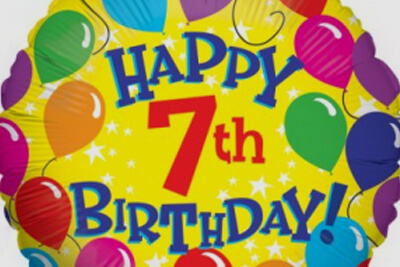
Many parents assume they must wait until their child has all of his or her permanent teeth to see Dr. Sharma for a consultation, only to discover treatment would have been much easier if they started earlier. The Canadian and American Association of Orthodontists recommend that children should first be evaluated by an orthodontist around age seven. Contrary to popular belief, a patient is not required to have all their permanent teeth to visit Aura Orthodontics and review if they have any orthodontic problems. An early orthodontic examination when both permanent and baby teeth are present allows for the detection or interception of problems early, and helps to ensure maximum dental and facial development for children. Some treatment options are lost once bony growth has stopped.
Why Is Age 7 Considered The Optimal Time?
Ok, so what’s so great about age seven, you ask? Enough permanent teeth have grown in for Dr. Sharma to make a determination about whether any problems are present. At age 7, the first molars have come in, providing an opportunity to check for malocclusion, or “bad bite. In addition, the incisors have begun to come in, and problems such as crowding, deep bites and open bites can be detected.
In other words, early treatment ensures the greatest result and the least amount of time and expense. At this early age, orthodontic treatment may not be necessary, but examination can anticipate the most advantageous time to begin treatment. When orthodontic intervention is not necessary, Dr. Sharma can carefully monitor growth and development and begin treatment when it is ideal.
An orthodontic evaluation at an early age provides one of two positive outcomes: For some, early identification or problems will lead to easier or shorter orthodontic treatment in the future. For others, a healthy prognosis will provide an immediate peace of mind.
Early evaluation, of course, may signal a need for early treatment. For some children, early treatment can prevent physical and emotional trauma. Aside from stimulating on years of harmful teasing, misaligned teeth are also prone to injury and are detrimental to good oral hygiene.
If your child exhibits any of the following conditions, it may be time to have an orthodontic evaluation.
• Difficulty chewing
• Open bite or mouth breathing
• Thumb or finger sucking
• Jaws that click or pop
• Overlapping or crowding of teeth
• Too much spacing between teeth
• Missing permanent teeth
• Obvious abnormal bite development – deep overbite, underbite, crossbite, protruding teeth
• Speech problems
• Biting into the cheek or into the roof of the mouth
The complexity of each child’s individual case will dictate the extent of the initial consultation and diagnostic procedures.
Complimentary Evaluation
Take advantage of a complimentary evaluation with Dr. Sharma. This visit gives patients the opportunity to meet and assess our orthodontic facilities. Dr. Sharma will assess your child’s smile to determine the best course of action for orthodontic treatment. Together, you and Dr. Sharma will develop a treatment plan designed to meet your objectives of improving your child’s teeth and their appearance.
At the consultation, photographs of the face and teeth are taken to provide a record of the child’s facial appearance. X-rays may also be needed to properly diagnose the malocclusion. Finally, if treatment is warranted, impressions of the teeth are taken. These study models provide a baseline reference of the current relationship of the teeth and jaws. With our modern dental facilities and knowledge about the latest developments in orthodontics, you can feel confident that you will receive the most effective treatment to correct your teeth.
If your child is nearing his or her seventh birthday, give us a call at Aura Orthodontics to schedule a free evaluation.





